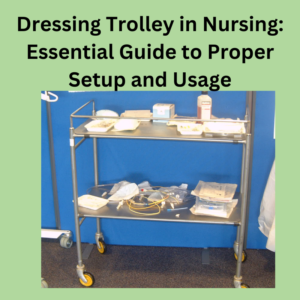Portable Ventilator: A Life-Saving Innovation for Respiratory Support
Introduction
A portable ventilator is a compact, life-saving medical device designed to provide respiratory support to individuals who have difficulty breathing. Unlike traditional hospital ventilators, these devices are lightweight and easy to transport, making them essential for home care, emergency services, and critical care during travel.
Ventilators have long been a crucial part of healthcare, especially for patients with chronic respiratory illnesses, post-surgical recovery, and emergency situations. The advent of portable ventilators has revolutionized patient care, allowing greater mobility, independence, and accessibility to life-saving support.
How a Portable Ventilator Works
A ventilator assists in breathing by delivering oxygen-rich air into the lungs and removing carbon dioxide. Here’s a breakdown of how it functions:
Key Components:
✅ Air Pump: Generates the airflow required for ventilation
✅ Oxygen Supply: Provides the required oxygen concentration
✅ Control Panel: Allows users to adjust settings based on patient needs
✅ Battery System: Ensures operation without direct power supply
✅ Alarm System: Alerts users to low oxygen levels, power failures, or disconnections
Different Ventilation Modes:
- Continuous Mandatory Ventilation (CMV): Provides a constant breath rate
- Pressure Support Ventilation (PSV): Assists natural breathing efforts
- Synchronized Intermittent Mandatory Ventilation (SIMV): Adapts to patient’s breathing pattern
Types of Portable Ventilators
Portable ventilators come in different types, each suited for specific medical needs:
🔹 Transport Ventilators: Used in ambulances and during patient transfers.
🔹 Home-Use Ventilators: Designed for patients needing long-term respiratory support at home.
🔹 Emergency & Disaster Response Ventilators: Used during mass casualty events or pandemics.
Key Features to Look for in a Portable Ventilator
When selecting a portable ventilator, these features are essential:
✔️ Lightweight & Compact Design—Easy to carry and transport.
✔️ Battery Life & Power Options—Look for extended battery backup with AC/DC charging.
✔️ Adjustable Settings—Customizable pressure, volume, and oxygen levels for different conditions.
✔️ Built-in Safety Alarms—Alerts for low oxygen, disconnection, or battery failure.
Benefits of Using a Portable Ventilator
✅ Increased Mobility—Patients can move freely instead of being confined to hospital beds.
✅ Emergency Readiness—Useful in natural disasters or emergency medical conditions.
✅ Cost-Effective—Reduces hospital stays and long-term medical expenses.
Who Needs a Portable Ventilator?
📌 Patients with chronic respiratory diseases—such as COPD, ALS, or neuromuscular disorders.
📌 Individuals Recovering from Surgery—Needing temporary breathing support.
📌 Emergency Response Teams—Used in ambulances and disaster response.
How to Choose the Right Portable Ventilator
Before purchasing, consider:
💡 Patient’s Condition—Choose a model that meets specific respiratory needs.
💡 Battery Backup—Opt for longer-lasting power options.
💡 Ease of Use—Should be user-friendly for caregivers.
💡 Brand & Warranty—Trust reputable brands with reliable after-sales service.
Popular brands include Philips Respironics, ResMed, and Medtronic.
Proper Usage and Maintenance
🔹 Setup: Follow the manufacturer’s instructions for proper installation.
🔹 Cleaning: Regularly disinfect masks, tubes, and filters.
🔹 Troubleshooting: Address common issues like low airflow or alarm notifications immediately.
Challenges and Limitations of Portable Ventilators
⚠ Battery Limitations: Frequent recharging is needed for continuous use.
⚠ Lower Airflow Capacity: May not be suitable for patients needing high-pressure ventilation.
⚠ Higher Cost: Advanced portable ventilators can be expensive.
The Future of Portable Ventilator Technology
🚀 AI-Powered Ventilators—Smart monitoring and auto-adjust settings.
🚀 Compact & Wireless Designs—Making transport even more convenient.
🚀 COVID-19 Impact—Increased innovation and development of cost-effective solutions.
Conclusion
Portable ventilators are transforming healthcare, making respiratory support more accessible and efficient. Whether for home care, emergencies, or travel, these devices empower patients to lead a better quality of life. Choosing the right portable ventilator ensures safety, comfort, and ease of use for both patients and caregivers.
FAQs
1. How long does a portable ventilator battery last?
Most models last between 4 to 12 hours, depending on the power settings and battery capacity.
2. Can portable ventilators be used at home?
Yes, they are designed for home use, especially for patients needing long-term respiratory support.
3. Are portable ventilators safe for children?
Yes, but pediatric models with customizable settings are recommended for safety.
4. What is the average cost of a portable ventilator?
Prices range from $1,500 to $10,000, depending on features and brand.
5. Do portable ventilators require special training to operate?
Basic training is advised for caregivers, but most modern devices come with user-friendly controls.






Reviews
There are no reviews yet.